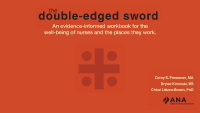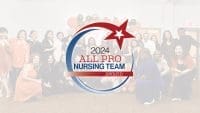For more than 15 years, I’ve been advocating for healthcare leaders to replace the term “opinion-based” with “evidence-based.” Too often, I’ve heard, “In my opinion, we should do the following.” Whether the speaker is referring to leadership or clinical practice, we hear “In my opinion” far too often.
When discussing staffing and staffing systems, we need to focus on “evidence-based” instead of “in my opinion.” Multiple well-designed research studies provide evidence that patient assignments should be based on patient acuity rather than simply the total number of patients.
Why acuity-base staffing?
The definition of acuity includes words like insight, keen, sharp, and alert. The complexity of patient care calls for staffing systems defined by those very words—systems created to support new ways to align nursing talent with patient and family needs. Traditional staffing methods based on the midnight census are quickly becoming obsolete. Those systems falsely assume all patients are average and all nurses are similar in terms of competency and talent.
Staffing isn’t typically associated with the root cause of healthcare challenges, such as razor-thin profit margins, high staff and leader turnover, and low patient satisfaction levels. But long-term success for managing these issues hinges on appropriate staffing and avoiding nurse-patient assignment inequity. High turnover at every level and low patient satisfaction are well-established markers for financial disaster, whether in health care or any other industry. One of the drivers for both turnover and satisfaction levels is frontline staffing. And no healthcare segment is exempt from experiencing this reality, whether it’s acute care, long-term care, ambulatory care, or any other setting.
Why now?
Systems used to organize and measure nursing services haven’t changed much over 60+ years. Most of them use volume-based, reimbursementdriven methods to allot staff for care. They don’t consider variations in physical layout of the care environment, nursing competency and skill levels, or fluctuations in intensity of patient care needed.
In addition, nursing care is invisible, and good nursing care is hard to measure. It’s often thought of simply as bad things not happening. These days, what’s measured are sentinel events and unintended incidents.
The good news
Fortunately, published research, implementation of evidence-based practices, and guidance from credible experts are guiding the paths to change. Assigning nurses to patients based on ever-changing care demands is becoming easier, thanks to advances in electronic automated systems, outcomes analysis, and the ability to measure nursing care value. Nursing business intelligence is being informed by big data and a greater understanding of the individual nurse-patient encounter.
I’m excited to see the advent of performance-based nursing care that better supports what patients need, when they need it. Such care is shaped by new evidence and real-time electronic technology, intersecting at a time when these things are urgently needed. Creating the platform for ensuring that the best nursing care is provided in the best care setting at the lowest cost can’t happen soon enough. When it does, “average” will be used only as a math term, not a staffing method. And every patient, every family, every patient, and every nurse will win.
Lillee Gelinas, MSN, RN, FAAN
Editor-in-Chief
For more information on acuity-based staffing, read “Practical steps for applying acuity-based staffing”



















1 Comment.
Lillee,
Congratulations on the great work you are doing as Editor-in- Chief for American Nurse Today. I read your editorial this month on “Patient assignment vs. nurse staffing: More than just numbers” and I rushed to reach out to you. Thank you for publishing the editorial and the article by O’Keeffe. Evidence-based staffing, value of nursing, understanding nursing cost and outcomes at the patient level vs. averaging are topics near and dear to my heart. I am not sure I shared my dissertation work with you. I completed a nursing cost methodological study merging data from three systems including patient assignment software. I was able to derive direct nursing cost per patient using a microeconometric cost model (nursing intensity multiplied by actual nursing wage summed for each nurse caring for a patient). I calculated huge variability in direct nursing cost for patients with similar DRGs. The methodology I used created direct nursing cost per shift, day, and acute care episode for patients on one medical/surgical nursing unit and begins to build evidence for staffing. The study was published in JONA-Jenkins, P., & Welton, J. (2014). Measuring direct nursing cost per patient in the acute care setting. Journal of Nursing Administration, 44(5), 257-262.
I appreciate your leadership and advocacy in supporting evidence-based staffing. You have always been a nurse leader I admire and I am amazed at the prodigious work you continue to accomplish.
Best to you,
Peggy Jenkins PhD, RN
Assistant Professor
University of Colorado College of Nursing